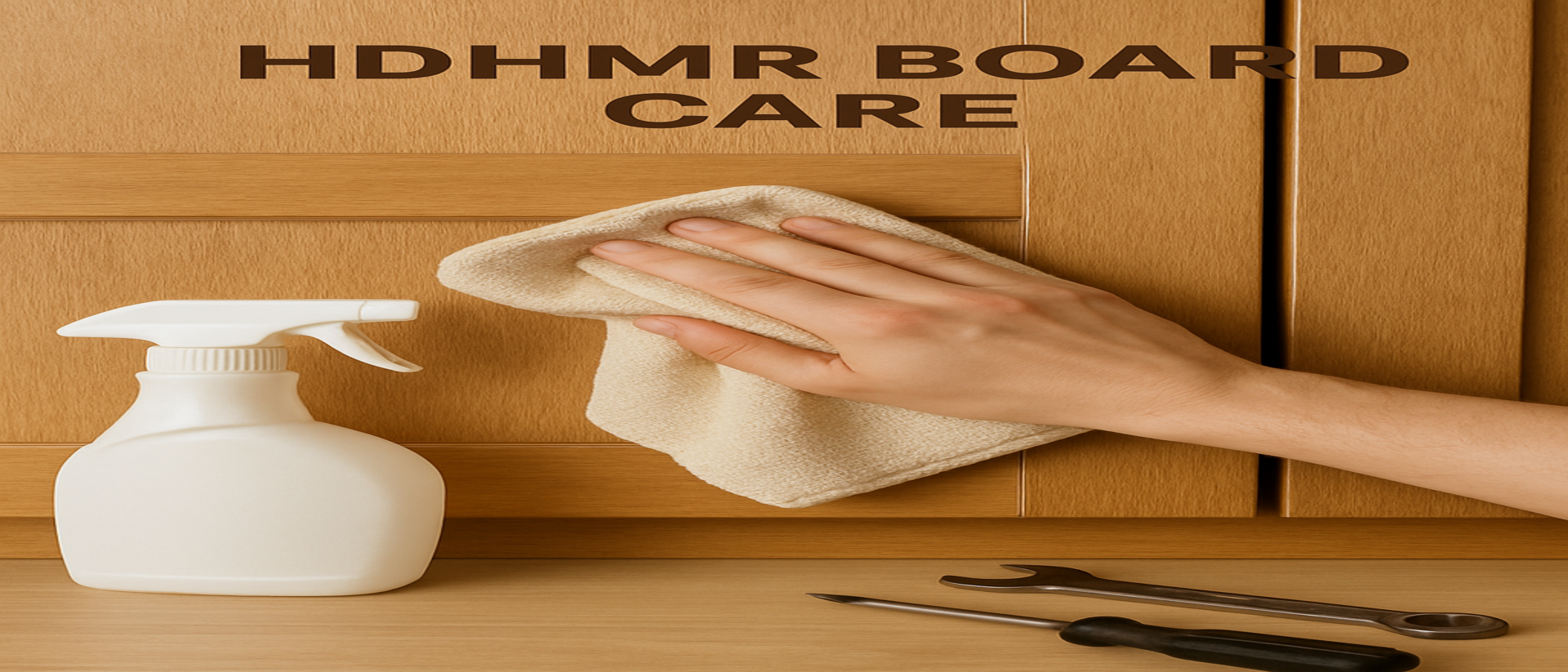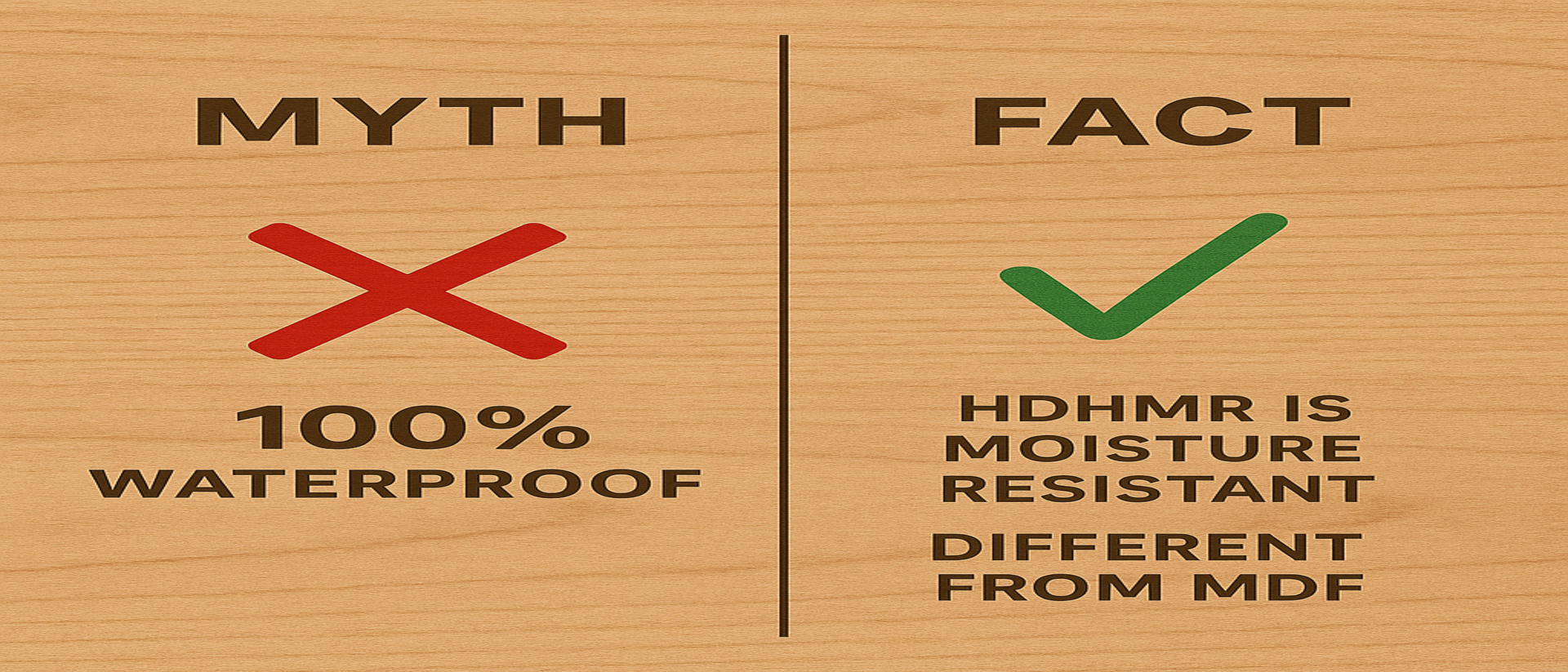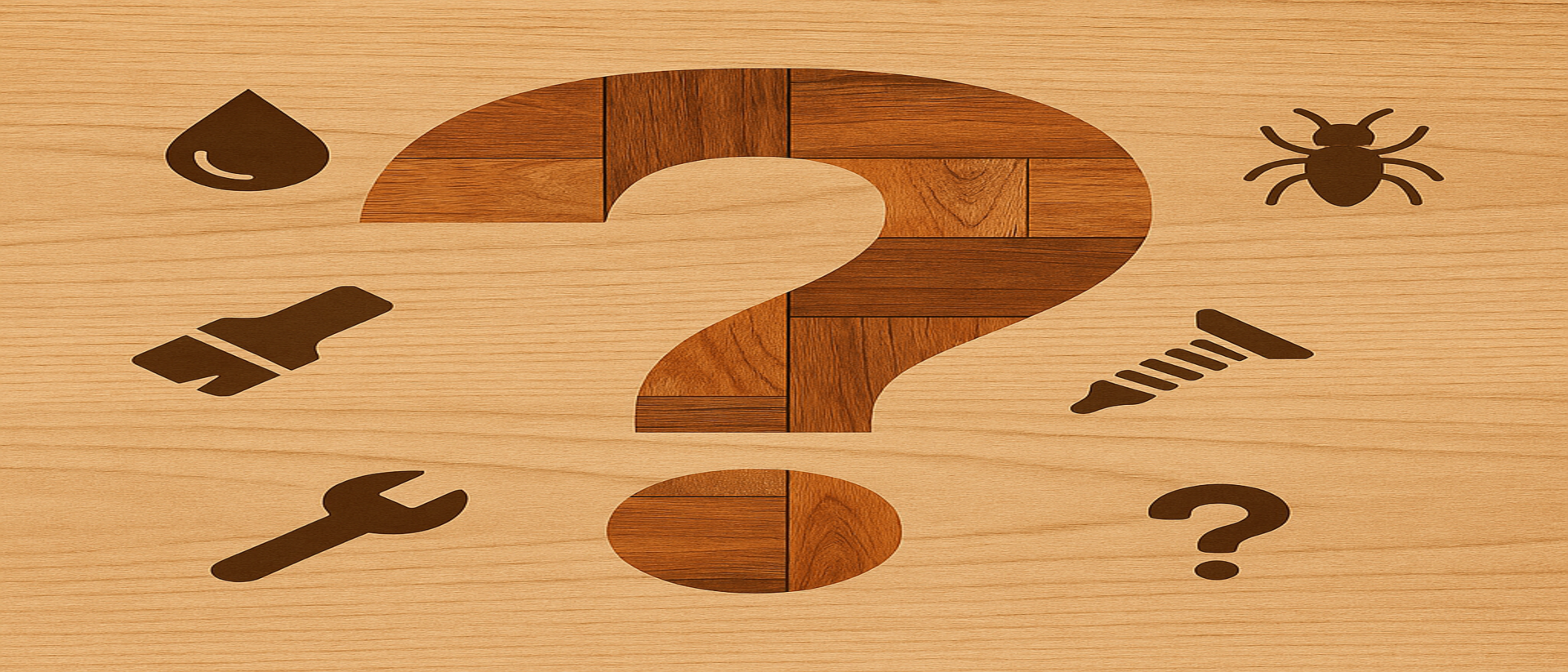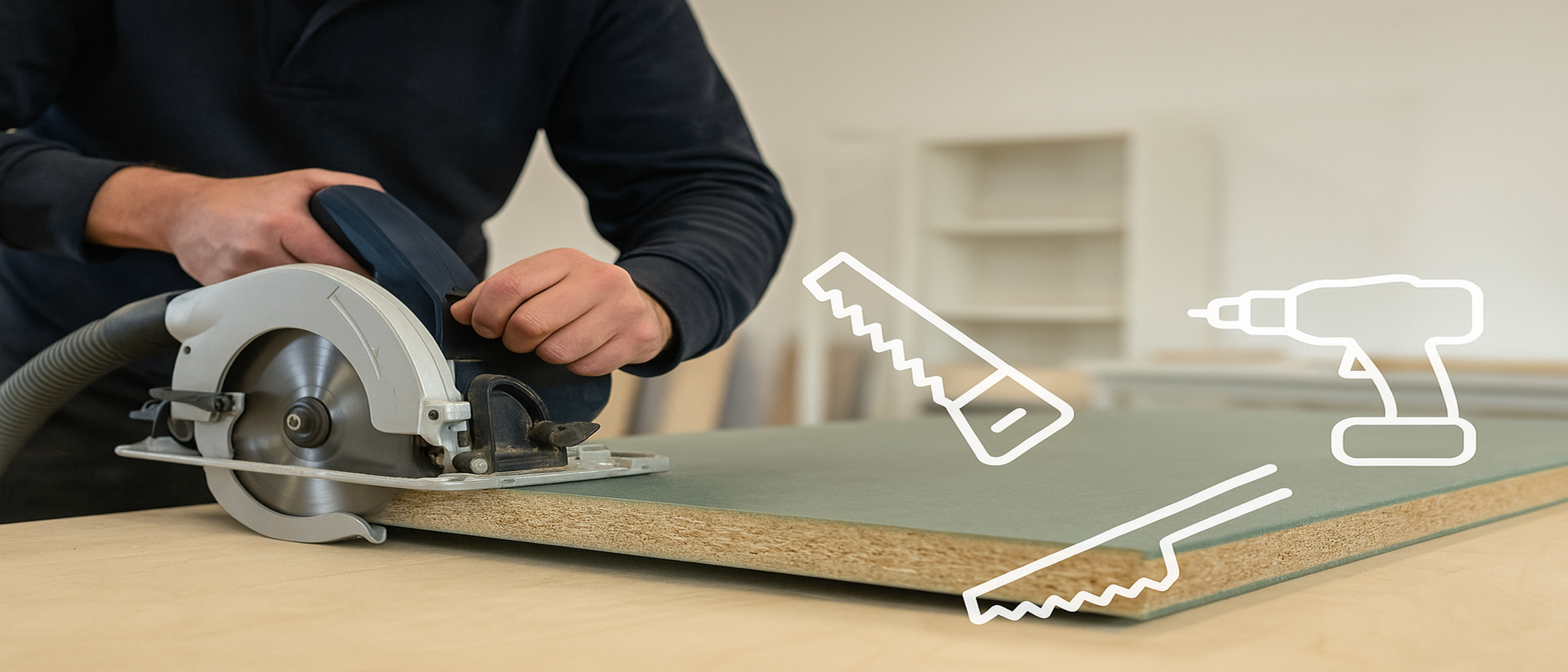Ever wondered what’s inside an HDHMR board and how it’s manufactured? HDHMR (High Density High Moisture Resistant) boards are a marvel of engineering, and their composition is the key to their impressive performance. In this guide, we’ll peel back the layers (so to speak) of HDHMR and explain how it’s made, what materials go into it, and why its composition matters for interior design. By understanding the makeup of HDHMR, you’ll see why it stands out in terms of strength, moisture resistance, and finish quality.
Ingredients of an HDHMR Board: Fibers and Resins
At its core, HDHMR is an engineered wood product. The primary ingredients are:
- Wood Fibers: HDHMR uses fine wood fibers or particles, usually sourced from hardwood species. Often, these come from forest wood waste or agricultural fibers. For example, some manufacturers use rubberwood chips, eucalyptus, or tropical hardwood residues. The key is that the fibers have to be of high quality to achieve high density. Unlike particle board which might use larger wood chips, HDHMR fibers are more refined – closer to what you’d find in HDF (High Density Fiberboard). This allows them to pack tightly together. Using hardwood fiber is crucial because hardwood has higher density and strength than softwood; Action Tesa (a known manufacturer) notes that HDHMR is “made of hardwood” to achieve its high density.
- Resins/Binder: To hold those wood fibers together, resins (glue) are added. For HDHMR, typically a synthetic resin like Urea Melamine Formaldehyde (UMF) or Phenol Formaldehyde is used, often fortified with special additives to impart moisture resistance. Melamine is common for moisture-resistant boards (HMR boards often use melamine-urea formaldehyde). These resins are what make the board water-repellent – they cure into a kind of plastic that coats the fibers. Some wax or other additives may also be included to further enhance water resistance and to lubricate during pressing.
- Additives: Beyond resin, manufacturers might mix in additives such as termite/borer repellents, dyes (for example, some HDHMR boards have a green tint indicating moisture-resistant grade), and sometimes fire retardants (though that’s less common unless specifically a fire-rated board). They also add wax emulsions which help with moisture resistance and also aid in the pressing process.
So, the “recipe” for HDHMR might look like: hardwood fiber 85-90%, resin and additives 10-15% by weight (these percentages can vary, but generally fiber is the bulk). This composition is similar to making a really beefed-up version of MDF with better ingredients.
The Manufacturing Process: From Fiber to Board
The magic of HDHMR lies not just in what it’s made of, but how it’s made. Here’s a step-by-step of the typical manufacturing process:
- Fiber Preparation: Raw wood (from plantations or waste) is chipped into small pieces, then refined into fibers. Often, they use steam pressure and grinding to turn wood chips into a fibrous pulp. This pulp might be dried to a specific moisture content. The fibers for HDHMR need to be consistent in size and fairly fine.
- Resin Mixing: The dried wood fibers are then mixed with the resin, wax, and additives. This is usually done in a big blender (imagine a giant mixer tossing fibers with glue). The goal is to coat every fiber uniformly with the resin blend. For HDHMR, they may add a bit more resin than standard MDF to ensure strong bonding and moisture sealing.
- Mat Formation: The gluey fiber mixture is then laid out into a mat (a thick fluffy blanket of resin-coated fibers) on a conveyor. This mat is much thicker than the final board will be.
- Cold Pre-Pressing (sometimes): Some processes do a light pre-press or calender to compress the mat slightly and remove air, making it easier to handle.
- Hot Pressing: This is the heart of the process. The mat is moved into a hot press, which is basically a large hydraulic press with heated platens. Under very high pressure and temperature, the mat is compressed to the desired thickness. HDHMR is pressed to a high density, so the pressure is significant (could be 40-60 kg/cm² or more, and temperature around 180-200°C). Under these conditions, the resin cures (cross-links) and the wood fibers are bonded together into a rigid board. This is where HDHMR gets its density and strength – the fibers are squished so tightly that the air between them is minimal, and the cured resin locks them in place. The duration in the press depends on thickness and resin type, but a few minutes per board is typical.
- Cooling & Conditioning: The hot board (which comes out as one continuous sheet in continuous presses or large individual panels in multi-daylight presses) is then cooled down and conditioned. This step ensures the internal stresses are relieved and the board stabilizes.
- Cutting and Sanding: The large boards are cut to standard sizes (like 8x4 feet sheets). Then, they are sanded to achieve uniform thickness and a smooth surface on both sides. HDHMR boards are often sanded very finely at the factory, which is why they feel so smooth to the touch.
- Quality Checks: Boards are checked for density, thickness uniformity, surface finish, and things like internal bond strength. Any with defects might be trimmed or rejected.
For pre-laminated HDHMR, an additional step of laminating decorative paper or veneer on the board is done (often during or right after pressing, using simultaneous pressing or separate lamination presses).
Why this process matters: The combination of intense pressure and the right resin is what gives HDHMR its name and fame. By compressing hardwood fibers so densely, you eliminate weak points. Traditional plywood has natural weak spots (like knots) and air gaps; MDF has uniformity but not as high density; HDHMR achieves uniformity plus density. As MagicBricks describes, “the wood fibres are mixed with resin... then compressed at very high pressure... then heated to activate resins, hardening the board” – this results in an “incredibly solid panel.” Exactly – HDHMR is essentially an incredibly solid panel of wood fiber.
Another aspect: the moisture-resistant resin used in HDHMR means that during pressing, it forms a bond that is less likely to break down with water. Standard MDF might use urea formaldehyde which is not very water resistant, but HDHMR’s melamine-enhanced resin keeps the board intact even if moisture penetrates a bit.
How Composition Affects Performance
Now, why go through all this trouble? Let’s connect the composition to the actual benefits:
- High Density = High Strength: Because HDHMR’s composition is heavier and tightly packed, the boards have high load-bearing capacity. Per unit volume, there’s more wood substance in HDHMR. This is why shelves don’t sag easily and why you can make slimmer panels that still hold up. For instance, the density of HDHMR (~850 kg/m³) versus typical plywood (600-700 kg/m³) means for the same thickness, HDHMR has more solid material. That translates to strength and also acoustic density (a small bonus: denser boards can dampen sound slightly better).
- Resin-Rich = Moisture Resistant: The composition includes water-repellent glue and wax. When that cures throughout the board, it makes the board hydrophobic to an extent. Also, because fibers are coated in resin and packed, water finds it hard to penetrate deeply – it might stay at the surface causing a slight swell, but won’t cause structural failure quickly. As cited earlier, the special glue ensures HDHMR “do not absorb water easily”. This is directly due to the resin type and content in the composition.
- Uniform Fiber Matrix = No Weak Spots: Since HDHMR is essentially the same material all through, it doesn’t matter where you cut or drill – you get consistent material. This uniformity, resulting from the even fiber-resin mix, means predictable machinability and no hidden voids. Cheaper plywood can sometimes have gaps inside; HDHMR does not. So the composition gives reliability in crafting and assembly.
- Smooth Surface: The fine fiber composition, when sanded, yields a surface that is free of grain. That’s why HDHMR is prized for laminating and painting – you are basically painting on a smooth, almost plasticized wood surface. The board’s faces come out of production flat and ready, which is a direct result of compressing fine fibers against smooth heated platens in the press.
- Higher Screw Holding: Composition-wise, because there’s more fiber packed for the screw threads to grab onto (and those fibers are glued together strongly), screws have more “meat” to bite into. If you’ve screwed into low-density particle board, you know it can be flaky; screw into HDHMR, it feels almost like going into a piece of natural hardwood. In technical testing, HDHMR and similar HDF boards show superior withdrawal strength (force required to pull a screw out) compared to MDF or PB. Again, credit the composition: dense fiber and robust resin around the screw.
- Termite Deterrence: The composition is also deliberately such that there’s minimal pure wood for termites to eat. All the wood is coated in chemicals and pressed into a form that’s not appetizing. The fact that “small wood content is removed” and what remains is treated, is why termites have trouble. Pests would have to work through tough resin-wood mix to get any nutrition, which is not worth it for them.
- Consistency and Quality Control: Because HDHMR is made in factories with controlled recipes, each board’s composition is nearly identical. That means you can expect the same performance from board to board (assuming a good brand). This is important for large projects – the last thing you want is one sheet behaving differently than another. The engineered composition ensures consistency that natural wood can’t guarantee.
HDHMR vs. HDF vs. MDF Composition
There are a lot of acronyms, so a quick note: HDHMR vs HDF-HMR vs MDF composition differences.
- MDF (Medium Density Fiberboard): Made of wood fibers and resin like HDHMR, but density is lower (usually ~600-800 kg/m³) and often the resin is not moisture-resistant unless specified as MR-MDF. Think of MDF as “standard cake” and HDHMR as “dense fruitcake” – both flour (fiber) and eggs (resin) but one has more packed goodies. MDF composition might include softwood fibers too, and less resin percentage.
- HDF (High Density Fiberboard): HDF is very close to HDHMR in density (often 800-900 kg/m³) but not all HDF is moisture-resistant. HDF is used for laminate flooring, etc., and if you add moisture-resistant resin to HDF, you essentially get HDF-HMR, which is the same as HDHMR. In fact, different manufacturers use different names: some call it HDFWR (High Density Fiberboard Water Resistant) or HDHMR. Compositionally, they are the same type of product – high density fibers + MUF resin. The Dezime AI blog clarifies that HDMR, HDHMR, HDF-HMR are basically the same board with different naming (just branding differences).
So if you ever see a board called “Exterior Grade MDF” or “HMR Board”, that’s similar composition to HDHMR. Action Tesa’s HDHMR, Greenpanel’s “Club HDF” (they use term HDWR - High Density Water Resistant) – all these share the composition traits we discussed, with minor tweaks brand to brand.
Why Composition Matters to You
Understanding HDHMR’s composition isn’t just tech talk – it helps you make smarter choices:
- Cutting & Joinery: Knowing it’s made of compact fibers and resin, you realize why using carbide tools and maybe slightly slower feed speeds prevents burning the resin. You also know that edge screw splitting is less of a worry than in plywood (no layers to split), but pre-drilling for large screws is still wise because of density.
- Finishing: You can anticipate that painting HDHMR will not need heavy priming (since it’s smooth and not very porous). If you cut the board, the composition tells you the edges might be a bit more porous (exposed fiber) so you’ll sand them smooth and maybe seal them for best results.
- Usage: By knowing HDHMR is wood fiber + glue, you won’t use it in extremely high-heat areas (glue might soften at extreme temps) or in constantly submerged conditions (it’s not plastic). But you will confidently use it in all the places it excels as per composition – high humidity, need for strength, etc. Also, you’ll store it properly: flat, in a dry place (even though it’s moisture-resistant, you store any wood panel flat to avoid any slight bowing and to keep it pristine).
- Environmental Impact: If you’re an eco-conscious consumer, hearing that HDHMR uses wood waste and plantation wood might make you feel better about its use. The composition involving formaldehyde resins might raise questions about VOCs, but many manufacturers produce E1/E0 grade boards now (low emissions). Being informed, you can ask your supplier about the emission grade, which is directly related to the resin in the composition.
In a nutshell, HDHMR’s composition — hardwood fibers densely packed with water-resistant resin — is what gives it those desirable qualities we talk about (strength, moisture resistance, smoothness, etc.). The way it’s made is a blend of materials science and engineering that results in a very modern material for interior design. It’s quite fascinating how something that starts as rough wood scrap can end up as a sleek panel capable of upgrading your kitchen or furniture.
Next time you touch an HDHMR board, you’ll know you’re feeling the product of intense pressure and a carefully crafted mix of wood and chemistry. And that’s why it matters – because that composition is your assurance of performance.
For more insights on HDHMR’s advantages born from its composition, you might want to read 7 Benefits of HDHMR Board You Should Know, which indirectly owe to how it’s made. And if you’re comparing materials, understanding composition is key – our article on HDHMR vs MDF vs Plywood (Basic Comparison) also touches on how different compositions lead to different behaviors.
Disclaimer: This article is generated using AI-assisted research and is intended for informational purposes only. While we strive for accuracy, readers are advised to verify all technical, pricing, and brand-specific details with official sources. hdhmr.in is not liable for any decisions made based on this content.




